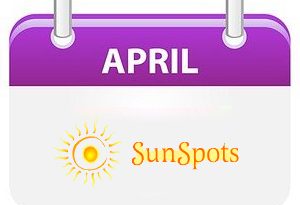Sunspots – July
July 4, 1905
Interurban streetcar service on the line between Vancouver and Steveston in Richmond began July 4, 1905. One of the cars that served that route from opening day—No. 1207, and still with us— was built in the BC Electric Railway’s own shops at the south end of 12th Street in New Westminster, and named the Steveston. (Her colors were different then: she was originally a jade green with gold trim and black undercarriage, not the brilliant red seen today.)
Service was hourly, and a return ticket from Vancouver to Steveston would set you back 85 cents. That dropped to 30 cents on Sundays, and clergymen travelled at half fare.
No. 1207 is busy these days, its century-old bones clanking along the rails between Science World and Granville Island on summer weekends, a terrific way to spend some time in the past. She’s staffed by volunteers, who happily answer questions from travellers, some of whom remember regular trips aboard these streetcars, and even more of whom weren’t born when this style of transportation was an everyday thing.
For a great read on those days of the streetcar, look for the book The Story of the BC Electric Railway by Henry Ewert.
July 5, 1981
The Devonshire Hotel opened at the northeast corner of Georgia and Hornby Streets in 1925. It took two years to put the building up. It took 6.5 seconds to bring it down.
On Sunday morning, July 5, 1981, hundreds of people crowded (prudently distant) onto adjacent streets and waited for Arrow Demolition’s big bang. The windows of nearby buildings, including the Vancouver and Georgia Hotels, were jammed with onlookers. At 7:05 a.m. Chris Charles, the wife of Arrow’s Brian Charles, pushed a delicate finger down on a button and, with a muffled crack from a hundred kilos of dynamite, the hotel’s central elevator shaft began to collapse. The rest of the seven-storey building fell inward, the moment captured by Sun photographer (Ken Oakes).A vast cloud of white dust rose up as the crowd cheered.
Not long after the dust settled, work began on building the HSBC Bank Canada building.
July 11, 1934
Actor John Barrymore, the “Great Profile,” visited Vancouver with his family July 11, 1934. The Vancouver Sun sent columnist Bob Bouchette to interview one of the superstars of his day, and Bouchette found him aboard his yacht Infanta. (It had a crew of 12.) With the 52-year-old Barrymore was his wife Dolores, 30, and their children, Dolores Ethel, three, and 13-month old John Blythe Barrymore.
Barrymore told Bouchette the family was heading for Alaska in search of trout and salmon. “Barrymore,” Bouchette wrote, “of the theatre’s ‘royal family,’ gets so cussed tired of painting his nose for the edification of philistines that whenever the opportunity offers he goes fishin’. In this language, Barrymore confessed to me the faint contempt he has for his work and avowed his passion for life on the great open spaces of land and sea.”
Later, Bouchette chatted with Barrymore’s wife, Dolores Costello, also a famous performer (six movies in 1929 alone). Dolores was holding her son, little John Blythe Barrymore, who would grow up to be a tortured and addictive wreck of a human being who in 1958 changed his name to John Drew Barrymore and who in 1975 would have a daughter named Drew.
July 12, 1979
The headline on Nicole Parton’s July 11, 1979 column in the Sun: The odds against Granville Island’s market are large.
But, to give Nicole her due, she wanted the market to succeed. It has. Some 10.5 million people visit every year now, and a big chunk of them go to the market. They’re having an anniversary celebration this morning, starting at 10:30. (Music, balloons, speeches.) The market opened July 12, 1979 and caught on fast. Denny Boyd raved about it in his column the day after the opening. AI want to be able to poke a red snapper in the gills. I want to hear a good trumpet player blow a couple of choruses of Yellow Dog Blues while I’m looking at the scallions. Dammit, I want to buy a warm cookie.”
When you visit the market today you’re in a building erected by the Island’s very first tenant (1916), B.C. Equipment Ltd.
July 18, 1915
On July 18, 1915, former American president Teddy Roosevelt and his wife were going to be in the city for an hour before catching a boat to Seattle. The Vancouver Board of Trade had formed a welcoming committee to greet the Roosevelts, who would arrive at the CPR station. The Board, unwisely, had not included Mayor Louis D. Taylor in the delegation. (They didn’t like him.)
Taylor heard of the Board’s plan and quietly arranged to have a car and driver waiting at the station. Then he drove to an earlier stop on the line (Westminster Junction, now Port Coquitlam), and boarded the Roosevelts’ train. He chatted amiably with them as they came into Vancouver. The train pulled in, the Board of Trade delegation surged forward . . . and Mayor Taylor stepped down onto the platform. He introduced the Roosevelts to the open-mouthed Board members, then whisked the former U.S. president and his wife off for a fast drive around Stanley Park before delivering them to their boat. The story is told in Daniel Francis’ lively book L.D.: Mayor Louis Taylor and the Rise of Vancouver.
July 19, 1937
Canadians tend to take longer to warm to new-fangled stuff, so it’s no surprise that sliced bread, which had been available in some US cities for a few years, didn’t get to us until July 19, 1937. We know who developed it: he was an Ohio jeweler named Otto Rohwedder, and he worked for 13 years on perfecting his machine. Bakers told him to forget it, because sliced bread would get stale faster. So Rohwedder went back to his drawing board and developed a machine that first sliced bread, then wrapped it.
Sliced bread gave a big boost to the sale of the electric toaster, too.
1937 also brought us the shopping cart and Kraft Dinner. All in all, a momentous year.
Hmm. The Pattullo Bridge opened in November, 1937. One wonders if they announced it as “The greatest thing since . . .”
July 25, 1925
If the wheels of government turned faster, we might be celebrating the 90th anniversary of the Canadian Corps of Commissionaires. It was the Duke of Connaught, Governor General in 1915, who saw the need to find jobs for unemployed Canadian veterans of the First World War. His inspiration was a similar organization founded in England in 1859.
But it took 10 years to happen. On July 25, 1925, a charter was obtained and three companies of Commissionaires were organized: one each in Montreal, Toronto and Vancouver.
Today the Corps has about 12,000 employees who earlier served in Canada’s military, the merchant navy or the RCMP. They work in building and airport security, bridge toll-collecting, bylaw enforcement, casino security, fingerprinting service, parking enforcement, parking-meter collection and training for native youth and young offenders.
A little over two weeks ago Charles Brown, the longest-serving member of the Corps, retired in Vancouver. He started his military career with the Royal Canadian Navy in 1941, was on Omaha Beach on D-day He was with the Commissionaires for 45 years, 25 of them at HMCS Discovery. He plans to write a history of that base. He’s 84, but he says he plans to be around another 10 years.
July 26, 1923
Why is there such a grand monument in Stanley Park to U.S. President Warren G. Harding, often cited by American historians as the country’s worst-ever president? Two reasons. The first is that he was the first incumbent American president to visit Canada, and he chose Vancouver. More than 50,000 of us crowded into the park to hear him speak, thrilled that such an important figure was visiting. It was July 26, 1923.
The second reason is that Harding died in San Francisco just seven days after visiting us, and a shocked Vancouver public wished to commemorate his visit. Harding belonged to the Kiwanis Club, and so did Vancouver sculptor Charles Marega, which didn’t hurt. Marega’s handsome sculpture stands on the spot where Harding spoke.
Because his administration was noted for its corruption, lots of theories about Harding’s sudden death popped up: he committed suicide, he was poisoned by his wife for his philandering, he was poisoned by fellow Republicans to rid them of an embarrassment, etc., etc.
Harding’s doctor was quite clear: the president had long suffered from high blood pressure and a heart attack was the cause of death.




